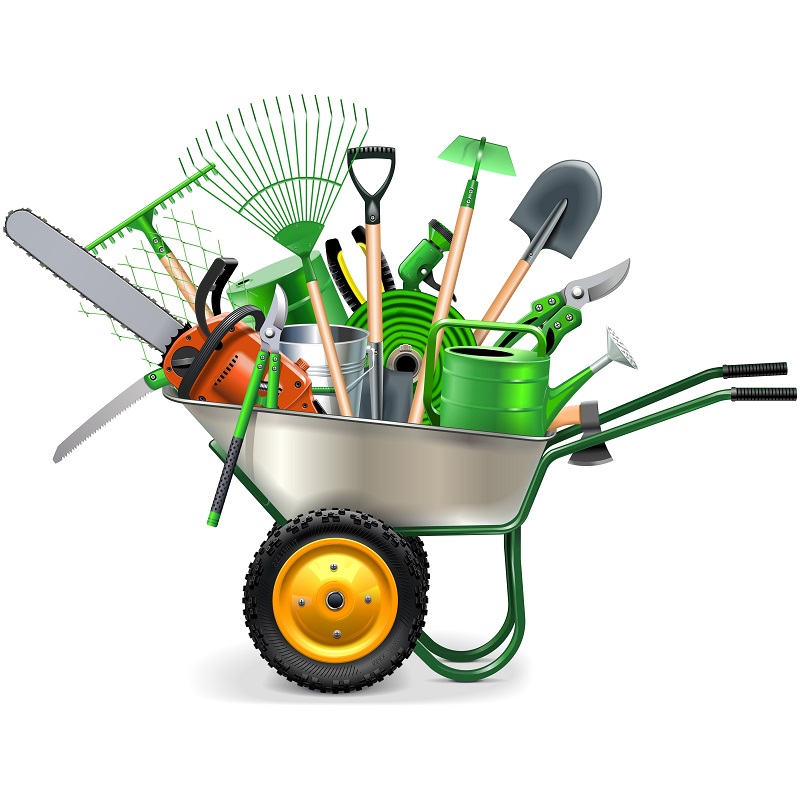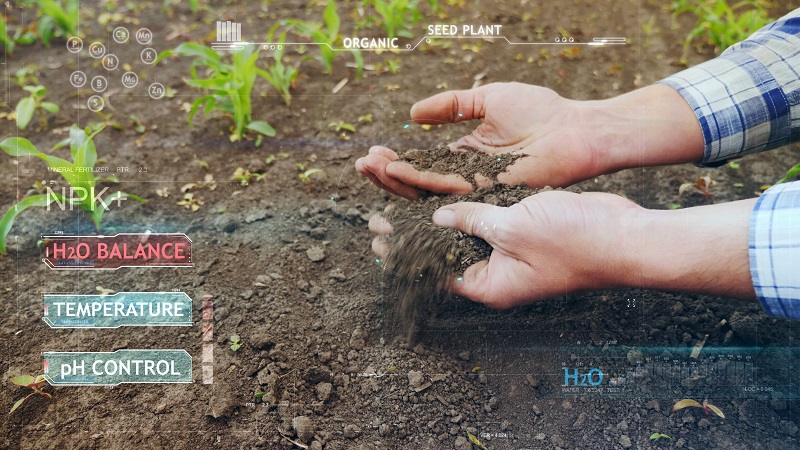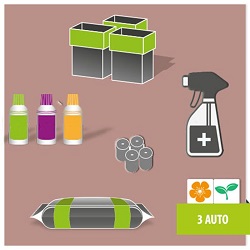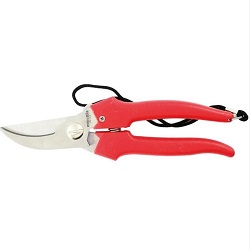In the vast world of outdoor growing, nature becomes our greatest ally. In the past, we have guided you through the best techniques for indoor cultivation.
However, in this manual, we want to focus on the art of outdoor cultivation, revealing the key to achieving healthy plants with productive yields.
By harnessing natural sunlight, wind, and nutrients found in the soil, outdoor-grown plants develop more robustly, healthily, and efficiently.

This method is particularly suitable for plant species requiring specific climatic conditions and is often associated with organic production, avoiding the use of pesticides or chemical fertilizers. And that’s not all.
This approach is also highly sustainable, as it reduces both costs and environmental impact compared to indoor cultivation.
At Grow Shop Italia, we have compiled this outdoor growing manual with valuable fundamental information, aiming to assist new growers in approaching this outdoor practice.
Specifically, by reading this article, you will learn:
- What are the advantages of outdoor cultivation
- How to cultivate outdoors: tips and key aspects to consider
- Growing cannabis outdoors: what you need to know
- Outdoor growing of autoflowering and feminized plants
- Outdoor vs. indoor cannabis cultivation: what are the differences?
- Guide and final tips for outdoor cultivation
Before proceeding, also read: Guide to cannabis cultivation

How to Set Up Irrigation Systems for Gardens and Vegetable Plots
What are the advantages of outdoor cultivation
Whether it is hemp, autoflowering cannabis, or other ornamental species, planting outdoors offers several significant advantages for growers compared to indoor, greenhouse, or grow box cultivation. Among the positive aspects that make outdoor crops an appealing choice, we can include:
- Exposure to sunlight: Natural sunlight provides a full and balanced light source that stimulates plant photosynthesis, promotes vigorous growth, and enhances the production of high-quality cannabinoids and terpenes;
- Natural ventilation: The outdoor environment offers constant airflow, helping to reduce the risk of mold and diseases while keeping plants healthy and vibrant;
- Lower energy costs: Outdoor growing drastically reduces energy costs associated with artificial lighting and ventilation systems used in indoor environments, such as grow boxes;
- Reduced equipment costs: Unlike indoor cultivation, which requires specialized equipment, outdoor cultivation requires fewer tools, thereby reducing initial and maintenance costs;
- Lower environmental impact: Outdoor cultivation is more sustainable as it requires fewer energy resources and has a smaller environmental footprint compared to indoor cultivation;
- Natural life cycle: Outdoor plants can follow seasonal cycles, which influence their growth, fostering the development of plants better adapted to their environment;
- Natural soil and nutrients: Plants grown outdoors can benefit from the nutrients found in natural soil, providing a complete nutrient profile without the use of chemical fertilizers.
Outdoor cultivation represents an opportunity to achieve high-quality yields sustainably, reducing costs and energy while fostering a more harmonious approach with nature.
Do you want to learn more about outdoor growing and discover practical tips on maximizing plant yields? Keep reading the next section.

How to cultivate outdoors: tips and key aspects to consider
If your goal is to achieve abundant outdoor cultivation, it is crucial not to overlook the key aspects of this method. As you will see, these are critical factors that can determine the success or failure of your crops.
Choosing the Right Variety:
- Selecting the most suitable plant variety for the environment in which you plan to cultivate is essential for successful outdoor growing. Do not base your choice solely on personal preferences, but opt for plants that are well-adapted to the local climate and resistant to diseases and pests.
Proper Placement:
- Choosing the right location for planting is fundamental. Ensure that plants have access to a nearby water source and, most importantly, receive as much direct sunlight as possible—at least 6 hours per day—while avoiding excessive exposure that could damage the leaves.
Soil Preparation:
- A fertile, well-drained soil with the right moisture balance is crucial for healthy plant growth. Make sure the soil is free from harmful contaminants, retains water adequately, and has a pH between 6 and 7, or one suitable for the specific outdoor plant you intend to cultivate.
Sowing:
- Every grower must carefully plan the timing of outdoor sowing, considering plant type and local climate. Adhering to the correct depth and spacing between seeds is essential for optimal growth. You might consider pre-vegetating plants indoors and then gradually exposing seedlings to direct sunlight.
Adequate Irrigation:
- Providing plants with the right amount of water is the best strategy for achieving healthy growth. It is important to carefully regulate water supply to avoid overwatering or drought. Water retention aids can be beneficial in cases where regular irrigation is challenging.
Balanced Fertilization:
- Balanced organic fertilizers can be used to ensure the plants' proper growth. However, fertilization must be adapted according to the different growth phases, paying close attention to prioritizing nitrogen, phosphorus, and potassium in the appropriate proportions.
Pest and Disease Control:
- Outdoor crops expose plants to a higher risk of harmful insect attacks. This is why constant monitoring of the plants is necessary to detect any signs of diseases or pests and intervene promptly with natural and safe solutions if needed.
- By following these guidelines, you will know how to cultivate outdoors successfully, achieving a bountiful and high-quality harvest. Keep reading to learn everything about outdoor cannabis cultivation.

Growing Cannabis Outdoors: What You Need to Know
First and foremost, outdoor cannabis cultivation is not legally permitted in many areas. However, with a careful and well-planned approach, it is possible to grow various legal hemp strains, including autoflowering and feminized varieties, achieving vigorous and high-quality plants. There are many advantages to growing cannabis outdoors.
Sunlight, fresh air, rainwater, and natural soil are free resources that make this experience rewarding and fulfilling, offering every grower the opportunity to:
- Grow larger plants;
- Utilize ample space for cultivation;
- Prevent mold and diseases caused by humidity;
- Practice companion planting with different outdoor crops;
- Grow in naturally rich soil with beneficial indigenous microorganisms;
- Reduce the use of chemical fertilizers.
As mentioned in the previous section, there are several factors to consider before starting outdoor cannabis cultivation.
First and foremost, it is essential to choose an appropriate location, considering temperature (between 12°C and 30°C), sunlight exposure (at least 6-8 hours per day), and protection from adverse weather conditions. Some options include growing marijuana on private balconies and gardens, guerrilla outdoor cultivation, or greenhouse setups.
Each outdoor growing area has its own advantages and disadvantages, requiring careful consideration of irrigation, plant health preservation, pest prevention, and pollination management.
The choice of genetics is also fundamental, taking into account the local climate and desired effects. Additionally, attention must be given to the plant’s early growth stage: germination requires darkness, humidity, and water, and it can be initiated directly in a pot. Once the seedling has sprouted, it should be transplanted outdoors. During the vegetative phase, plants focus on photosynthesis and leaf development.

Outdoor Cultivation Kit for 3 Autoflowering Plants
An outdoor cultivation kit for 3 autoflowering plants. These kits are specifically designed for growing autoflowering plants outdoors on terraces and gardens.
Outdoor growing of Autoflowering and Feminized Strains
Autoflowering outdoor seeds produce plants that are genetically programmed to flower independently of light cycles.
This means that they do not rely on the length of day and night to initiate flowering, unlike photoperiod-dependent strains.
In outdoor environments, this translates into greater control over the growth cycle and the possibility of multiple harvests per year.
Autoflowering strains often have a shorter growth cycle, allowing for a rapid production of mature buds.
If you want to learn more, check out our guide: Autoflowering cannabis cultivation: Outdoor and Indoor.
On the other hand, growing feminized seeds outdoors offers another interesting perspective.
Feminized strains are specially bred to produce only female flowers, which contain the highest concentration of cannabinoids.
Growing feminized plants eliminates the need to identify and remove male plants during growth, simplifying the cultivation process and ensuring a harvest focused on resinous buds.
However, cultivating feminized seeds outdoors requires a good understanding of the plant’s growth cycle and specific needs at each stage.

Explore Our Outdoor Cultivation Kit Category
Outdoor vs. Indoor Cannabis Cultivation: What Are the Differences?
Cannabis cultivation, whether outdoors or indoors, presents significant differences that impact growth conditions, environmental control, yield, and more. Here is a comparison between the two cultivation methods, analyzing their key aspects:
Environmental Control
- Outdoor: Subject to natural climatic conditions such as sunlight, temperature, rain, and wind. Control is limited and requires adaptability.
- Indoor: The environment is fully controlled, allowing precise regulation of temperature, humidity, light, and ventilation.
Lighting
- Outdoor: Depends on natural sunlight and daylight duration. Sunlight is more intense and free, but its duration varies seasonally.
- Indoor: Uses artificial plant lights (LED, HPS, CFL), allowing precise control over the light cycle and intensity.
Life Cycle
- Outdoor: Plants follow the natural light cycle and flower in response to seasonal changes.
- Indoor: The light cycle can be controlled to induce flowering at any time of the year.
Yield
- Outdoor: Plants can grow larger, but yield may vary depending on weather conditions and location.
- Indoor: Optimal yield control allows for multiple harvests per year.
Costs
- Outdoor: Generally lower costs (free sunlight), but investments may be needed for soil, fertilizers, pesticides, and weather protection.
- Indoor: Higher costs due to electricity, equipment, artificial lights, and environmental control.
Pesticides and Fertilizers
- Outdoor: More susceptible to pests and diseases, requiring more attention to safe pesticide use.
- Indoor: Greater control over infestations and fertilizer use.
Time and Effort
- Outdoor: Requires less direct intervention but demands seasonal attention and monitoring.
- Indoor: Requires daily monitoring, regulation, and constant care.

Pruning Shears - Garden Model
Garden model pruning shears. Designed for trimming plants and small branches, featuring an ergonomic handle, sharp blades, and a safety lock.
Outdoor hemp cultivation provides ample space, abundant sunlight, free rainwater, natural ventilation, and the satisfaction of working closely with nature. However, it also presents challenges such as increased vulnerability to pests, predators, climate fluctuations, and frost.
On the other hand, indoor cultivation offers greater plant protection and full environmental control. It allows for the regulation of temperature and humidity, and plants can be kept more discreetly. However, indoor growers must contend with limited space, potentially lower yields, and additional costs associated with energy consumption.
Ultimately, the choice between outdoor and indoor cultivation depends on your preferences, needs, and yield objectives. Some growers combine both methods to maximize yield and quality.

Final Guide and Tips for Outdoor Cultivation
At the end of this detailed outdoor growing guide, we want to leave you with some final tips to follow:
- Constantly monitor plant progress to detect any signs of disease or pests and intervene promptly.
- Listen to your plants and observe their reactions to different conditions, adjusting care accordingly.
- Learn from mistakes and don’t be discouraged if you make errors. Every cultivation is a learning opportunity. Take notes on what works and what doesn’t to improve your technique in the future.
- Share your experiences by joining online forums or local grower communities to exchange tips and insights with other enthusiasts.
We hope this guide has inspired and provided you with the necessary knowledge to successfully embark on your outdoor cannabis cultivation journey. Remember, consistent practice and adapting to your plants' needs will lead to a rewarding cultivation experience and a bountiful harvest.
Start your outdoor adventure today. Visit our category dedicated to outdoor plant cultivation kits and enjoy the fruits of your hard work and dedication.

Explore Our Gardening and Irrigation Tools Category